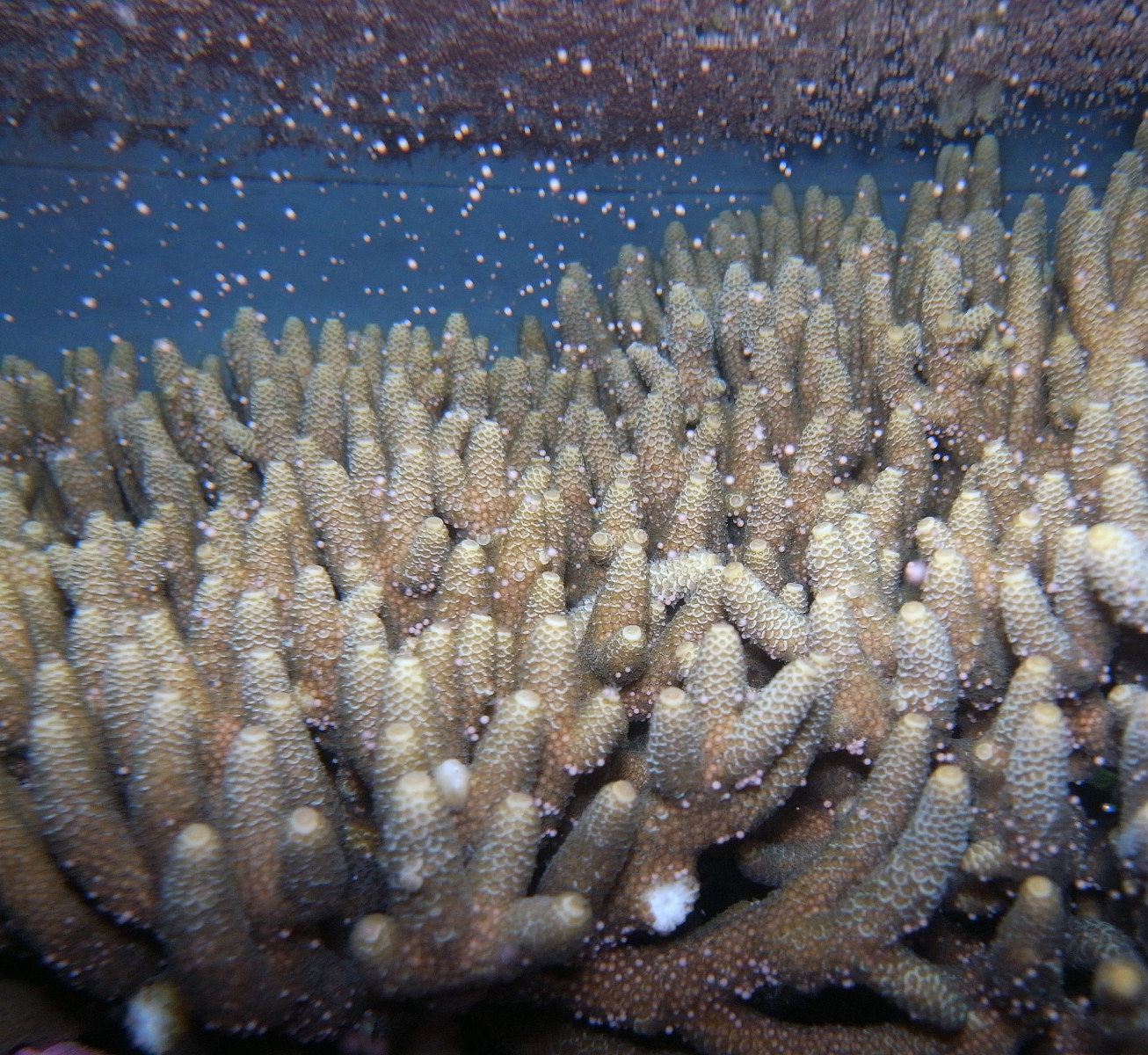Coral mass-spawning
Interview with
Arguably, one of the wonders of the underwater world is the annual mass spawning of corals.  Incredibly, on a single day each year, they simultaneously release their eggs and sperm into the water. We know it has something to do with the moon cycle and light levels, but what genes are involved and how do they control the process? Speaking to Chris Smith, Oren Levy is at Bar-Ilan University in Israel...
Incredibly, on a single day each year, they simultaneously release their eggs and sperm into the water. We know it has something to do with the moon cycle and light levels, but what genes are involved and how do they control the process? Speaking to Chris Smith, Oren Levy is at Bar-Ilan University in Israel...
Oren - Between 2005 to 2007, I was a postdoc in Australia in the University of Queensland. I was fascinated by what's called the mass spawning event which is a mass coral reproduction when the coral release eggs and sperm into the water column in a window of one day a year, usually during November, a few days after the full moon. I was very curious how corals can actually tune their behaviour year after year to a specific night in a specific window of time when more than 130 coral species release their gametes which meaning sperms and eggs into the water column for fertilisation. So basically, this started the whole questioning how the machinery can time this kind of behaviour.
Chris - Because obviously, one has to synchronise appropriately because if they don't, in a vast environment like the ocean, then a few eggs and a few are never going to meet otherwise, are they?
Oren - Exactly. So, there's no point: if there is no synchronisation or desynchronisation in this process probably will not have any future, new cohorts. So, we wanted actually to explore more in depth using different molecular tools to understand if there are specific genes that involve in this kind of synchronisation and releasing the gamete into the water column in a specific time of night. We decided to go back to Heron Island in the Great Barrier Reef to try and make a large experiment, when we actually took corals for the reef, a few nights before the full moon of November which is the night of the spawning. We decided every night for a few days to take some specific pieces from the coral's colony to detect which genes are expressing directly during the spawning.
Chris - Did you catch the samples or remove those samples at the same time every day and did you also get a snapshot of what was happening during the spawning so you can see what the normal basal level of gene expression is, what genes are on or off, at what level, but also, how that changes when the spawning kicks in?
Oren - Yes. So basically, we took the corals out of the reef two nights before the full moon. The actual spawning when the gamete were releasing into the water column were on the 16th of 11/2011, which was almost 5 days after the full moon. So we basically couldn't guess exactly when this event is going to happen. So every day, actually we sampled some small pieces from the corals. So we managed to have the history and the baseline before the spawning event.
Chris - What switch is on, what switch is off when the spawning is actually kicking in?
Oren - So we found like 200 specific genes that are showing very high expression level during the spawning event. These genes are related basically to what's called G protein. G proteins are some kind of receptor that can detect different signals from the environment like different pheromones, different neuropeptides or different changes in light levels in other chemical signalling for the environment.
Chris - So what do you think is going on then? Are the coral cells collectively discussing whether it's the right time to do the release through a mixture of detecting at the level of the individual cell but then also having a chemical conversation? So there's a group decision and when the signal gets appropriately strong amongst the group, that then reaches some kind of threshold triggering the release of the gametes.
Oren - Yes. So we think there is some kind of a threshold in this. We cannot say specifically what is the final signal causing the gamete release. We know there are certain environmental condition like if it is too windy or too wavy or it's raining, the coral will postpone the gamete release a few days later. So they will all wait for specific conditions to maximise its own abilities later on.









Comments
Add a comment